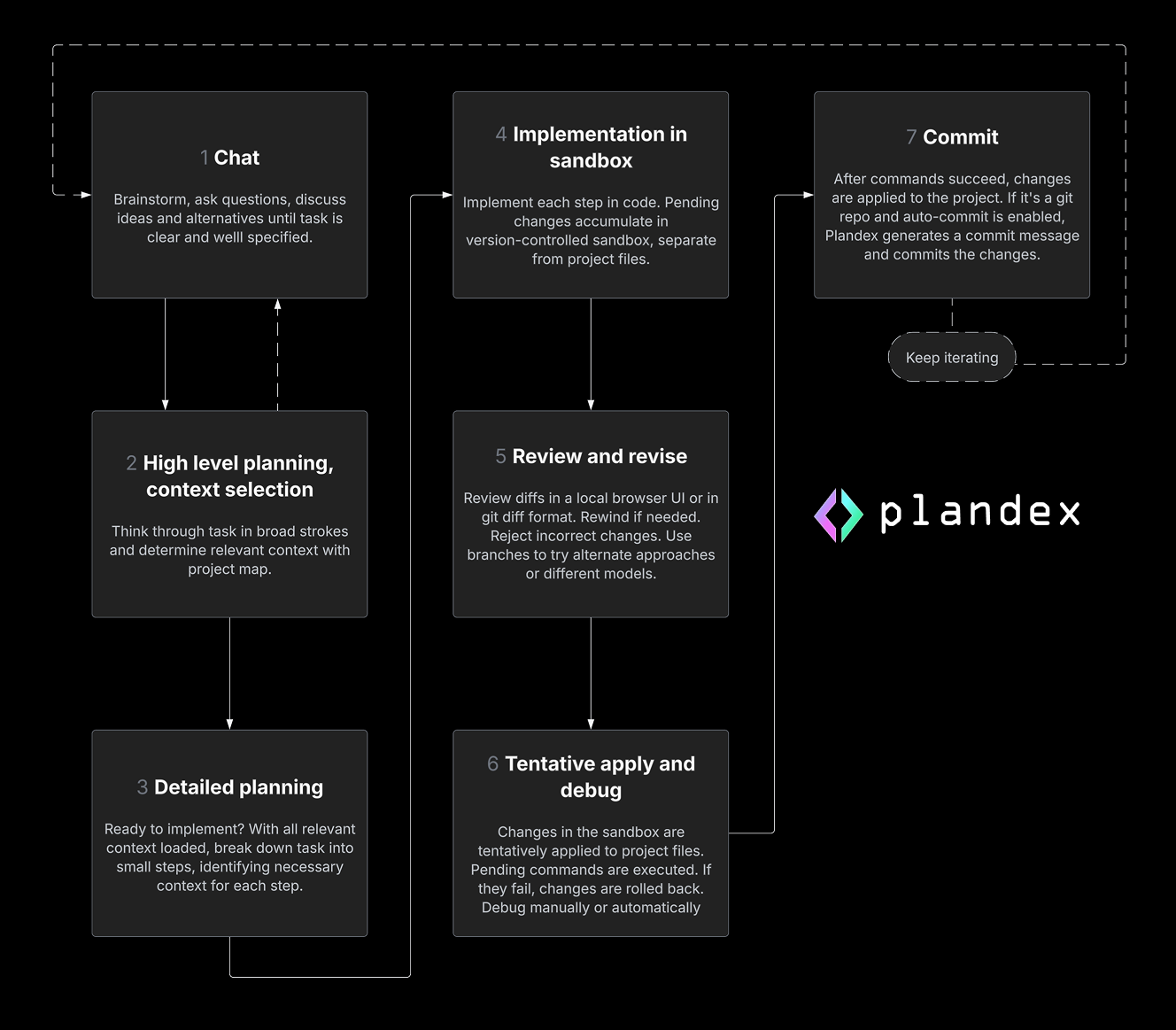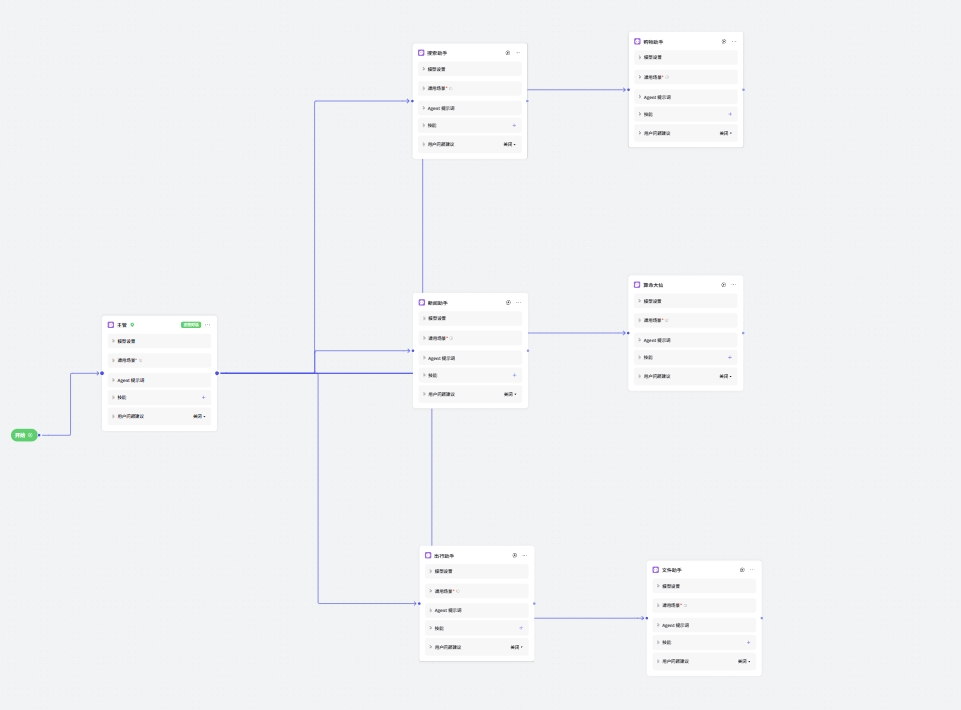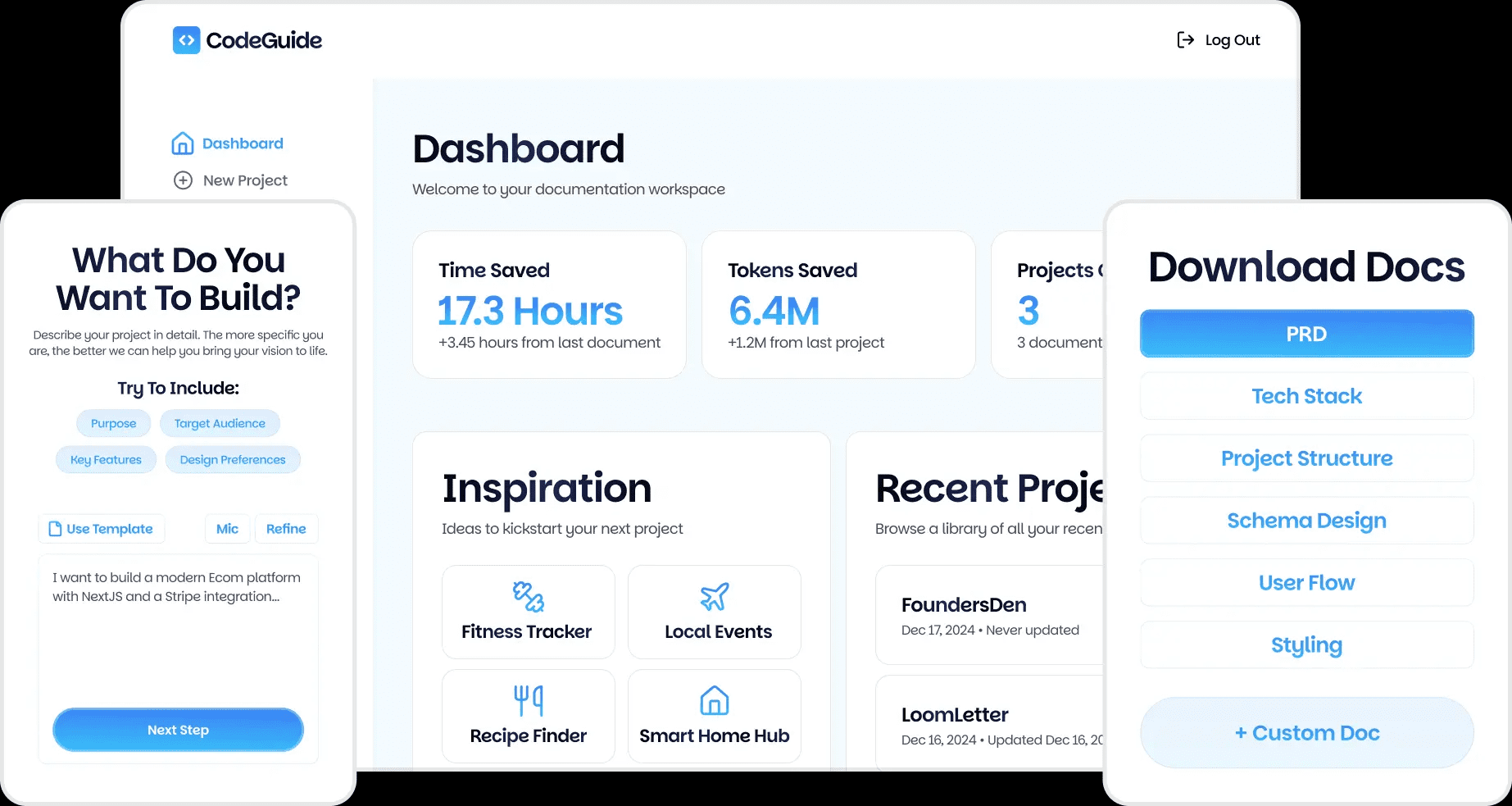Plandex: an open source AI coding assistant with support for ultra-long contexts
General Introduction
Plandex is an open source end-to-end AI coding assistant designed for large and complex software projects. It can plan and execute multi-step tasks and handle up to two million token Plandex provides a sandboxed environment to isolate AI-generated code changes that developers can review before applying to ensure project security. It supports OpenAI, Anthropic, Google, and many other models, allowing users to switch flexibly to optimize performance and cost.Plandex offers fully automated modes and fine-grained control, suitable for beginners to professional developers. It is easy to install, supports Git integration and version control, and is suitable for individual and team development. Plandex offers cloud hosting and local deployment options to meet different needs.

Function List
- Large-scale project management: Supports contexts of 2 million tokens and indexed catalogs of up to 20 million tokens, suitable for very large codebases.
- Multi-model support: Integration with models from OpenAI, Anthropic, Google, and more, allowing switching to optimize performance and cost.
- Sandbox review: AI-generated code changes are stored in a sandbox where developers can review them file by file and then apply them, avoiding direct project modifications.
- automation debugging: Automatically detects and fixes terminal command errors, supports build, test, and deployment, and is compatible with browser application debugging (requires Chrome).
- Project Map Generation: Quickly generate project maps with tree-sitter support in over 30 languages and verify syntactic accuracy.
- version control: Support for branch management, exploring multiple implementation paths, and integration with Git for automatic commit message generation.
- Flexibility and autonomy: Fully automatic mode or step-by-step control is available to accommodate different task complexities and developer preferences.
- context management (computing): Accurately load files or directories through the terminal, automatically updating the context and ensuring that the model gets the latest code.
- REPL Interaction Model: Supports fuzzy auto-completion command line interaction for fast file loading and task execution.
- Localized Deployment: Supports Docker deployment of local servers, protects data privacy, and is suitable for self-hosting needs.
- Chat mode: A project-aware chat feature suitable for discussing code, learning techniques, or planning tasks.
Using Help
Installation process
Plandex offers a simple installation method and supports Mac, Linux, FreeBSD and Windows (via WSL). Here are the detailed steps:
- Installing the CLI::
- Run the one-click install command with no additional dependencies:
curl -sL https://plandex.ai/install.sh | bash - After installation, the
plandexmaybepdxcommand is available. - Verify Installation: Run
plandex --version, check the version number.
- Run the one-click install command with no additional dependencies:
- Local deployment server (optional)::
- Git, Docker and Docker Compose need to be installed.
- Clone the repository and start the server:
git clone https://github.com/plandex-ai/plandex.git cd plandex/app ./start_local.sh - Running in a new terminal
plandex sign-inIf you want to use the "Local mode host" option, select the "Local mode host" option (default).http://localhost:8099). - Set the API key:
export OPENROUTER_API_KEY=<your-openrouter-api-key> export OPENAI_API_KEY=<your-openai-api-key>
- Windows user::
- Only supports WSL environment, you need to run commands in WSL terminal, Windows CMD or PowerShell is not supported.
- Cloud Hosting Options::
- Plandex Cloud (integrated model): No API key required, supports multiple devices, and includes a $20 monthly credit for getting started quickly.
- Plandex Cloud (comes with API key): Using OpenAI and OpenRouter key for users with existing accounts.
- Visit https://app.plandex.ai/start to register and get started.
Usage
Plandex operates via terminal commands and core functions include task planning, code generation, review and debugging. Below is the detailed flow:
Initialization Project
- Go to the project catalog:
cd your-project-dir - (Optional) Initialize your Git repository:
git init - Start the Plandex REPL:
plandexor use the short command:
pdx
Chat mode
- Default into chat mode, suitable for discussing projects or learning about the code base:
\chat 探索现有代码库中的认证逻辑 - Plandex analyzes context and answers questions, and developers can clarify tasks step by step.
Create a plan
- Switch to tell mode to create a plan:
\tell 添加用户认证功能,包括登录和注册 - Plandex generates a detailed plan that lists the steps and required documents, prompting the user for confirmation or adjustment.
Loading Context
- Adds a file or directory to the context:
plandex load path/to/file plandex load path/to/directory - Plandex automatically updates the context to ensure that the model uses the latest code.
Review of changes
- View code changes generated by AI:
plandex changes - Viewing of differences in the terminal UI supports document-by-document review. Accepts changes:
plandex apply - It can be manually modified and reloaded after rejection.
automation debugging
- Execute terminal commands (such as build or test):
plandex run npm test - If the command fails, Plandex analyzes the error and generates a fix recommendation. Chrome is required for browser debugging:
plandex run --browser
version control
- Create branches to try different implementations:
plandex branch feature-auth - Fall back to a previous state:
plandex rewind - Commit changes to Git:
plandex commit - Plandex automatically generates the submission information.
Switching Models
- Change the model to optimize performance or cost:
plandex --model gemini-exp - or in REPL mode:
\set-model deepseek-v3
Featured Function Operation
- Large-scale project support::
- Plandex uses tree-sitter to parse the code structure and generate a project map. Run
plandexAutomatically indexes projects and supports more than 30 languages such as Python, JavaScript, Go, and more. - Example: Processing a 2 million token code base, Plandex loads files on demand to reduce token consumption.
- Plandex uses tree-sitter to parse the code structure and generate a project map. Run
- Sandbox review::
- Changes are stored in the sandbox, running
plandex changesView discrepancies. Supports line-by-line review to prevent erroneous code from entering the project. - Example: After generating 50 file changes, you can check each one in the UI to make sure the logic and syntax are correct.
- Changes are stored in the sandbox, running
- automation debugging::
- When running test commands, Plandex captures errors and generates suggestions for fixing them. For example:
plandex run pytest - Browser debugging support for Chrome to automatically analyze front-end errors.
- When running test commands, Plandex captures errors and generates suggestions for fixing them. For example:
- Multi-model optimization::
- Switch low-cost models (e.g. DeepSeek):
\set-model deepseek-v3 - Model switching without context loss is suitable for long-term tasks.
- Switch low-cost models (e.g. DeepSeek):
- Chat mode::
- For exploring a code base or learning techniques. Example:
\chat 解释项目中的 OAuth 实现 - Plandex provides detailed answers with code examples.
- For exploring a code base or learning techniques. Example:
caveat
- API key: OpenAI and OpenRouter keys need to be set up for cloud mode (with their own keys) or for local deployments.
- cost management: Enable context caching (OpenAI and Anthropic are supported by default), select low-cost models, and load context exactly to reduce costs.
- Community Support: Join Discord (https://discord.gg/plandex-ai) or GitHub Discussions (https://github.com/plandex-ai/plandex/discussions) for help.
application scenario
- Large code base maintenance
Plandex quickly indexes projects and generates project maps while developers maintain a code base of over 2 million tokens. Users can load modules, generate new features or fix bugs, and sandbox reviews ensure code security. - Rapid prototyping for new projects
When startup teams develop applications, Plandex plans REST APIs, database models, and other features. Fully automated mode accelerates prototyping, and branch management supports multiple architectural attempts. - Learning Across the Technology Stack
When developers are learning a new language such as Rust, Plandex's chat mode answers questions and generates sample code to help get started quickly. - Automated Test Generation
When adding tests to a project, Plandex analyzes the code and generates unit tests. Sandbox reviews ensure coverage and automated debugging fixes failed use cases.
QA
- What programming languages does Plandex support?
Plandex uses tree-sitter support for more than 30 languages, including Python, JavaScript, Go, Java, C++ and more, and project map generation to ensure syntactic accuracy. - How can I reduce the cost of use?
Enable context caching, choose a low-cost model (e.g., DeepSeek), and load the context file exactly to minimize token consumption. - Is it possible to run Plandex locally?
Yes, Docker is supported for deploying local servers, using OpenAI and OpenRouter keys, and data is not uploaded to the cloud to protect privacy. - How does Plandex differ from other AI coding tools?
Plandex specializes in large projects, supports 2 million token contexts, and provides sandboxed review and automated debugging, which is superior to tools that only provide code completion.
© Copyright notes
Article copyright AI Sharing Circle All, please do not reproduce without permission.
Related posts

No comments...




